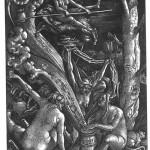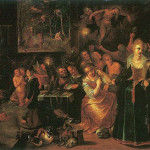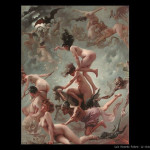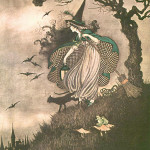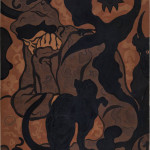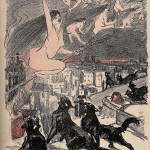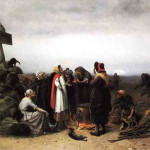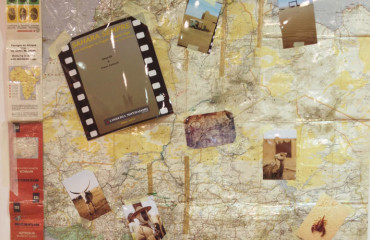n the dark times of the Middle Ages, when the cat fell out of favor it was associated with witches, a fact that has marked the iconological evolution deviating much the figure of the cat from what is its real archetypal meaning. Recently, the psychoanalyst C. Widmann in The Cat and Its Symbols has presented us our feline as a “dark shadow figure” (suggesting that the cat demonization matches the demonization of instinct by consciousness) and at the same time as “a seductive figure of Soul”, an “animal guide to the elsewhere”, “guardian of the threshold” for its ethological feature sprinkles in human being the experience of the boundary between nature and culture, between conscious and unconscious, between ordinary and unspeakable. “Sitting on the threshold, the cat becomes familiar with the tremendum that extends beyond the threshold”.
The cat, especially the black one, makes his sad debut as a familiar of witches in the recordings that enrich the first manuals of the “perfect witch hunter”, it is proposed almost as an essential appendage of the witch and at the same time as a guide like Widmann would. In addition, just as an initiator recurring figure, we see it materialize as a common figure and emblematic symbol in the works of numerous authors who have ventured into the pictorial representation of the dark numinous. It gives its back to a witch in Witches’ Sabbath Hans Baldung Grien (1510), it remains on the sidelines in a corner of the Witches’ Kitchen by Frans Franken II (1606), it is balanced on the back of an old hag in sensual Vision of the Sabbath by Luis Ricardo Falero (1878), or – along with others like them – is still lying lazily watching a Congress of Witches in the work by William Holbrook Beard (1876). It jumps in fairy tales illustrated by Arthur Rackham (Six Witches at the Sabbath) is the guide of the delicate witches of Ida Rentoul Outhwaite in The Little World of Elves and Fairies. In modern times, it turns into an attractive witch in the work Metamorphosis by T.A. Steinlen, and even before, it comforts its mistress in Witch and Black Cat by Paul Ranson to get to the present day, after a career on greeting cards for Halloween still to accompany the modern witches in the dark nights of All Saints. Moreover, even though superstition has it that crossing a black cat brings bad luck is always good to remember Groucho Marx’s joke: “A black cat crossing your path signifies that the animal is going somewhere”. The Middle Ages ended and the black color is always in fashion…
 English
English  Italiano
Italiano 

